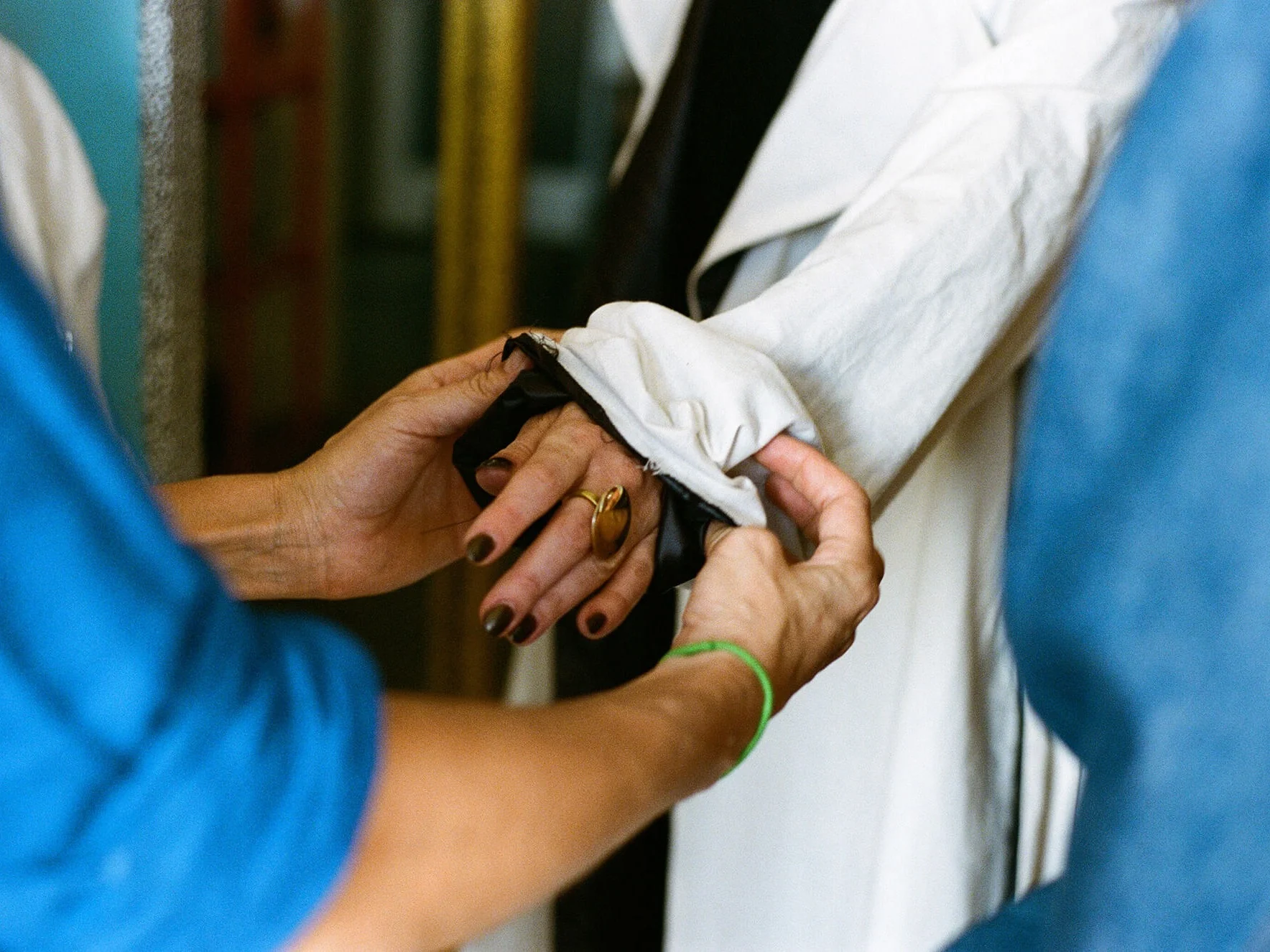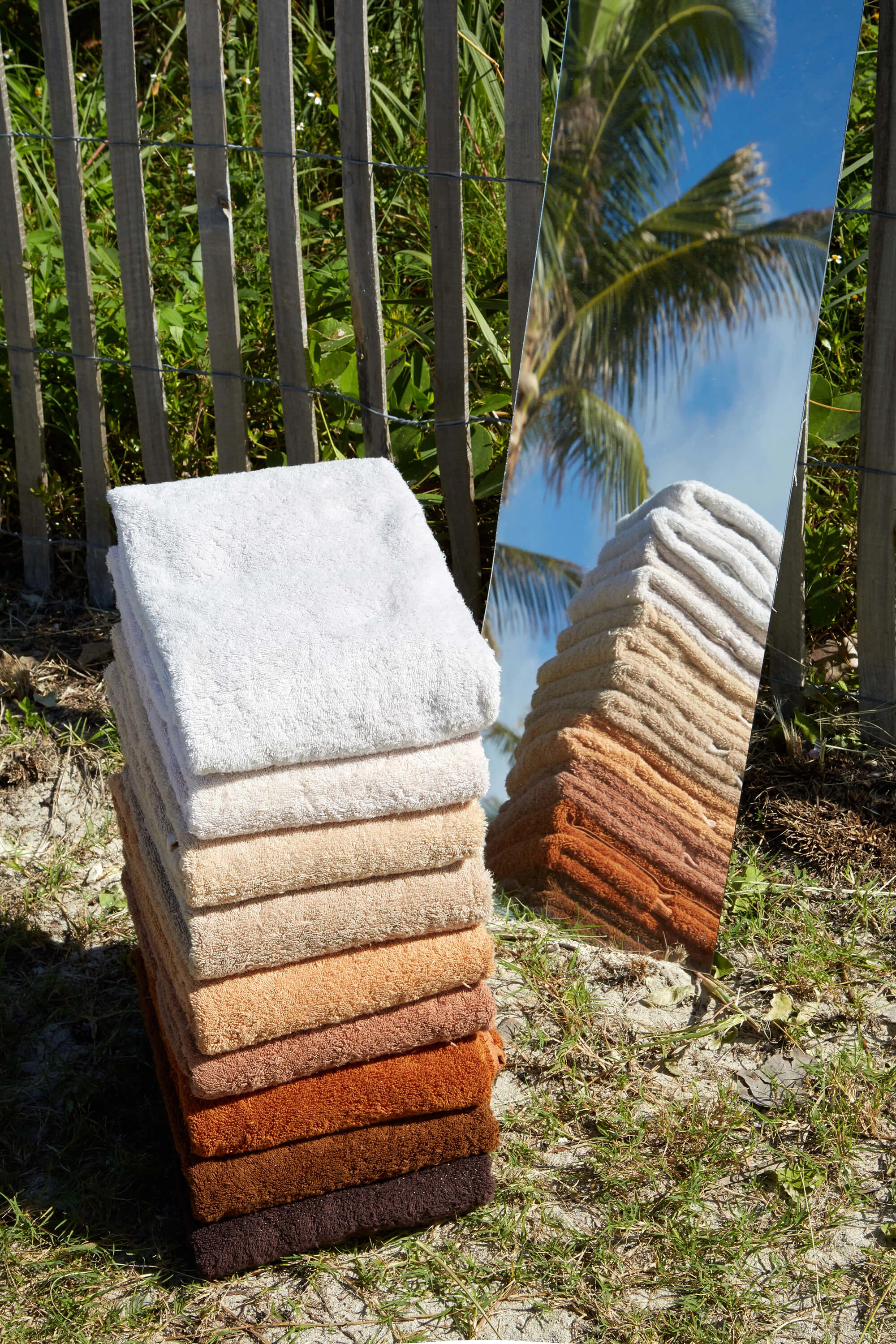
From a chess player in the park to an 87-year-old fashionista, former American Apparel designers Iris Alonzo and Carolina Crespo collaborate with everyday people to design the clothes they can't find anywhere else.
Andreas Tzortzis visited the Los Angeles-based company EVERYBODY.WORLD to talk about bringing genuinely new ideas into the fashion world.
Photos by Pia Riverola.
It took years for her to work up the courage to talk to him, let alone ask him the question she had been burning to ask. But Iris Alonzo took her time, sitting ever closer to where the gentle, elegant Indian man wearing a sun hat played chess at the same concrete bench every day, across from her building in MacArthur Park in Los Angeles.
In the 12 years since she lived there, life had taken Iris on some amazing adventures. She joined American Apparel just after they had signed the lease on their first store, and rose to design director, enjoying creative freedom and a passport that was slowly running out of pages to stamp.
But the brand’s ups and downs and eventual bankruptcy ultimately left Iris searching for a new purpose. Together with friend and fellow American Apparel alum Carolina Crespo, she began working on an idea for a new clothing brand, one that put sustainability, fairness and collaboration at the heart of its purpose.
And the chess player was going to play an important part.

“When we formed the concept of the company where we would invite non-designers to design things, we thought: We don’t want it to be ‘it guys’ and ‘it girls’ and influencers,” Iris says.
“It’s really about finding the beauty in the every day, or a regular person. You know, like that guy in the park. That guy is so cool. He’s the perfect example of someone who should be a designer with us.”
So Carolina and Iris approached him one day to ask if he might possibly consider designing a sun hat. He demurred. Why would he want to do that? He already had a sun hat.
But, he added, he did have a hard time finding a button-up shirt he liked.
“And the first conversation we had, it was clear he had already put a lot of thought into what’s wrong with shirts, and how to make them better,” she says, laughing.
Prakash Gokalchand’s Perfect Button-Up is now one of EVERYBODY.WORLD’s bestsellers.
The interaction, which came soon after they founded the label in 2016, taught Carolina and Iris the first two lessons of their unique collaborative mission: firstly, everyone has at least one piece of clothing they want to design and secondly, never assume you know what that piece is.


“We originally thought, let’s just ask our friends, and then we thought, let’s go beyond our friends and try and approach this greater world, where you don’t get input from someone like Prakash,” says Iris.
“It’s understanding that it’s about consistency for him. Why can’t that be part of the story we tell? It’s hard to make clothes—and they’re kind of frivolous at a certain point, so if you can put a why behind every single garment you’re putting on the planet, then to me it’s really worthwhile and exciting.”
EVERYBODY.WORLD now counts 20 collaborators, from an 87-year-old they met at the gym (Delores' Twist and Tie Top), to the stylish 15-year-old whose style Iris admired while standing in line next to her at an event (Paloma's Perfect Pants and Ribbed Tank Top).
That same week, they launched collaborations with two others: PIN-UP magazine founder Felix Burrichter designed a line of towels in different hues of skin tones, and chef Angela Dimayuga put out a line of unisex bikinis.

Not that you’d notice anything unusual was up at EVERYBODY.WORLD HQ. The office in Penthouse A, with its floor-to-ceiling windows affording a stunning view of Downtown LA’s high-rises , feels exactly like the product of a collaboration between two fashionable friends.
The brand’s eclecticism is on full display, as are traces of its mission. One workspace is surrounded by three walls, two of them filled with empty water bottles, a nod to their commitment to sustainability in manufacturing and design. Behind that is a rack of shelves groaning with 1970s and 80s era Vogues, Penthouses, and Taschen books. There’s even a stacked collection of National Geographics.
As diverse is the crew working on the brand: Ari Katz from Perth writes the copy and content, and Chinwe Okona – of Nigerian heritage from Miami – runs wholesale (alongside studying for her her MBA at the University of Southern California).
Iris, in high-waisted jeans and a Mr. Wash t-shirt, stalks around with an energy that won’t flag throughout her tour today, her beagle/Jack Russell terrier mutt Charlie always in tow.


On a clothing rack packed with small runs of their collaborations, Iris feels the button-up shirt's fabric. She notes with glee that the two patterns Prakash eventually chose – after being shown hundreds – matched the pattern of his chessboard and the blue tarp he always carries with him.
“These are real relationships. Prakash we certainly consider a friend at this point, and that’s the only way this really works,” she says.
As lead designer, Prakash gets ten percent of every sale, which means that about once a month, Iris or one of her team take the elevator down, walk across the street to the park and present him with sales figures and a check. It’s an idea that took hold while she was at American Apparel.
“There were products that went on to make millions of dollars for the company and I thought, wow, if I had a dollar for every idea I put in here that would be amazing,” she says.
“Or, if a kid working in a retail store in Ohio had a dollar for every color she suggested that outsold the other colors, that would be amazing. Really, what it came down to was valuing the ideas themselves.”
Iris learned something else from American Apparel: the value of, well, values. A seemingly unstoppable hit machine in its heyday, with coquettish models splashed across global billboards in colorful basics, AA hit the skids because of stiff competition from fast-fashion brands and sexual harassment accusations against its founder, Dov Charney.

After she left the company during the great regime change of 2015, Iris went on a couple of interviews with design brands, but left the process feeling empty.
Carolina, who designed American Apparel’s first logo at a Kinko’s in Silver Lake before becoming head of the kids’ division, had felt the same. “We just wanted to do something completely different.”
As she says this, she’s sorting through a large bin of 100% recycled cotton t-shirts on the same type of factory floor she once haunted as a toddler. The daughter of parents who owned and ran a clothing factory from the 1970s to the 90s, Carolina feels at home in places like this.
Each day, machines stretch miles of fabric and bins are wheeled around with samples. In a back room, EVERYBODY.WORLD’s team of youngsters does quality control. One of the first things Iris and Caroline wanted to achieve with their company was fair pay.

“We try and simplify designs so manufacturing stays reasonable but we can still pay fair wages. All of these things have to add up to what we consider a meaningful garment that should be on the planet,” Iris says.
“We’re going to go through all the work so nobody is exploited in the process, the planet isn’t exploited in the process and everyone leaves feeling good about it."
In the coming years, she wants to grow the collaborator count from 20 to 100. She and Carolina even envision a moment where collaboration proposals can be submitted digitally, though the execution of even a simple pattern is time intensive and requires a lot of back-and-forth. There is also the question of dilution. With so many collaborators, how do you create a sense of cohesion?
“There’s something that we find between all of them,” she says. “If we put them all in a room, they have a positive spirit. They’re kind people and we think they have great style, even though their style might be totally different.
"The overarching brand is really about our lens on reality. We’re not trying to create this fantasy world that people are buying into. We’re putting our aesthetic lens on what’s already there on the streets and giving each of these people a platform.”